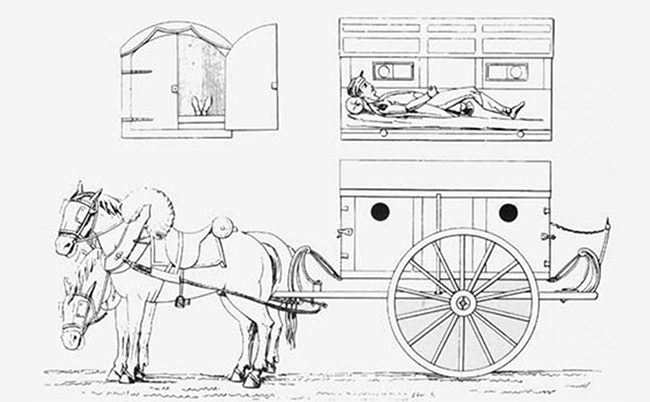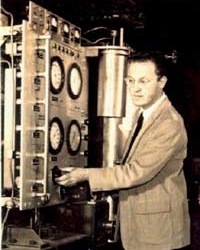Before the work of Dr. Dominique Larrey, very few units were equipped with a complete first aid kit. It wasn’t until 1792, while observing cannon fire during battles along the Rhine River, that he conceived the idea of flying ambulances.

Illustration of a flying ambulance.
Previously, military regulations dictated that injured soldiers be kept in massive, cumbersome patient wagons until the battle concluded. Sometimes, they had to wait 24-36 hours before medical teams could reach them. Larrey’s “flying ambulances” were small horse-drawn carts equipped with stretchers, which in many cases could function as emergency operating tables. This was also the mobile medical team that supported Napoleon’s army in battle.
They were fully stocked with medical supplies for first aid and could transport the injured to the hospital. Thanks to this, Larrey became the chief physician of the French army, and he later developed the concept of ambulances to get the wounded to field hospitals as quickly as possible.

Larrey also pioneered the classification of patients, treating the injured based on the severity of their wounds rather than their military rank. He strongly believed in the necessity of amputating limbs as early as possible to save lives, and during the Battle of Borodino, Dr. Larrey reportedly performed 200 amputations within just 24 hours. He was also the first to describe the therapeutic effects of maggots on open wounds.





















































